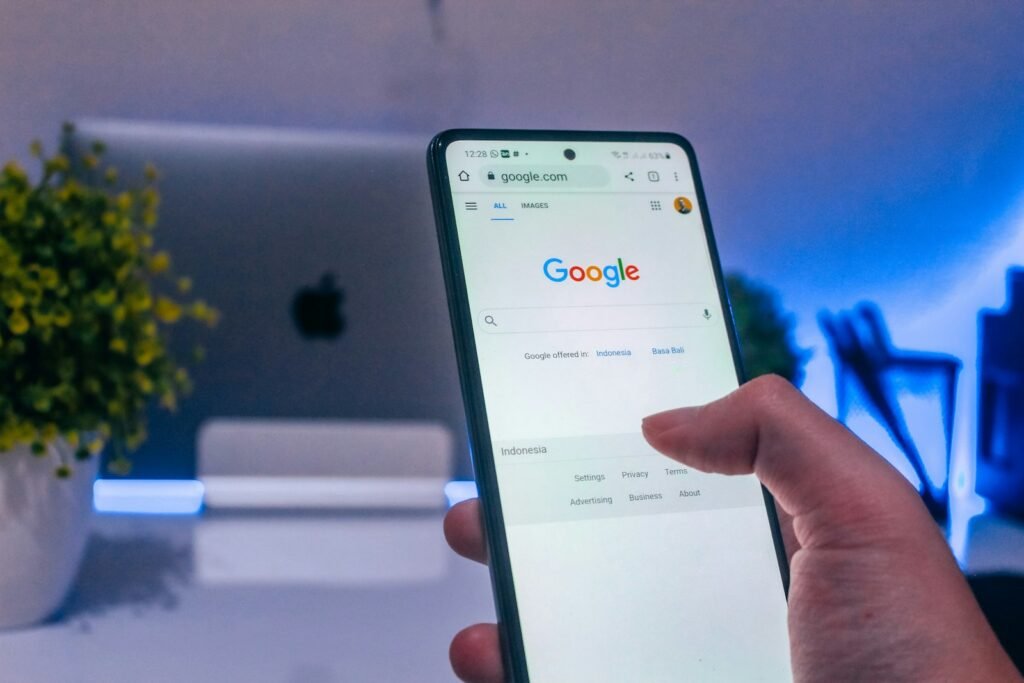
Why On-Page Optimization is Crucial for SEO Success
In the constantly shifting landscape of SEO, on-page optimization holds a crucial key to unlocking success in your digital pursuits. Imagine your website as a virtual emporium amidst the chaotic thoroughfares of cyberspace. You may possess unparalleled wares, but if your storefront remains shrouded in obscurity within a dim alleyway, how will eager patrons ever chance upon your offerings? Enter on-page optimization, swooping in like a heroic vigilante to guide search engine crawlers straight to your online abode. As the renowned Seth Godin once proclaimed, “Content serves as the fundamental building block of all digital marketing.” What better means to exhibit your exceptional content than by meticulously optimizing every crevice and corner of your website for maximum exposure and resonance?
Delving further into the enigmatic labyrinth of on-page optimization, let us not overlook the significance of keywords those enchanting phrases that hold the key to unlocking search engine triumph. Keywords act as breadcrumbs leading wayward souls (or potential clientele) directly towards your virtual trove of treasures. As per the profound words of Albert Einstein: “If you cannot explain it simply, you do not understand it well enough.” Therefore, maintain simplicity; strategically scatter those keywords throughout your content and witness as your website ascends through the echelons of search engine eminence. Yet remember: eschew excessive stuffing akin to an overstuffed Thanksgiving turkey Google possesses discernment, just as do your readers. Allow those keywords to flow organically like harmonious notes within a symphony showcasing digital marketing prowess.
Understanding the Basics of On-Page Optimization
In the vast expanse of the internet, ensuring your website stands out is like injecting pure energy into your SEO efforts. Picture your website as a spacecraft hurtling through the digital universe, with on-page optimization serving as the intricate dashboard guiding you through the celestial maze of search engines. Without this crucial step, you risk drifting aimlessly among the stars, lost in a sea of countless websites.
To truly understand the power of on-page optimization, envision it as the secret ingredient that transforms your website into a magnet for search engine algorithms. Just like a perfectly crafted dish that entices even the most discerning palate, your website must be seasoned with precision incorporating relevant keywords, meta tags, and captivating content to captivate search engine bots. As culinary icon Julia Child famously said, “You don’t have to cook fancy or complicated masterpieces – just good food from fresh ingredients.” Similarly, when it comes to on-page optimization, simplicity reigns supreme; focus on delivering top-notch content that resonates with your audience and keeps them coming back for more.
The Role of Keywords in On-Page Optimization
Oh, the mystical realm of keywords in on-page optimization! Let us plunge into this vital component of SEO with the zeal of a squirrel hoarding nuts for winter.
Keywords act as the trail of breadcrumbs guiding search engines to your website. As Seth Godin wisely put it, “Content is king, but distribution is queen, and she wears the pants.” Keywords serve as your covert weapon in the quest for online visibility. Without them, it’s akin to searching for a needle within a haystack within another haystack. So scatter those keywords like confetti throughout your content, but remember not to go overboard! Balance is crucial, my comrades. Be strategic, be cunning, be like a ninja navigating through the shadows of SEO.
Creating Engaging Content for Better SEO Results
In the world of digital marketing, the eternal struggle to produce captivating content is a perplexing puzzle that keeps us constantly on edge. With attention spans fleeting at an alarming rate, the challenge lies in crafting content that not only grabs but holds onto the audience’s interest. As Seth Godin aptly put it, “Content is the atomic particle of all digital marketing.” Why settle for mediocrity when greatness is within reach?
Imagine this: You’re scrolling through a webpage, desperately seeking that one piece of information that speaks directly to your very essence. Suddenly, you stumble upon a gem of content that not only enlightens but also entertains; educates while simultaneously enthralling – this delicate balance is what we strive for. In the wise words of Sir Winston Churchill, “If you have an important point to make, don’t try to be subtle or clever. Use a pile driver.” Engaging content acts as that powerful “pile driver,” keeping your audience hooked and coming back for more, ultimately boosting your SEO ranking in the process.
So let us unleash our inner storyteller with bursts of wit and charm, creating content that not only dominates search engine results but also deeply resonates with our readers.
Optimizing Meta Tags for Improved Search Rankings
Oh, the enigmatic world of meta tags – often overlooked yet wielding immense power in the realm of SEO! These seemingly insignificant lines of code hold a mysterious influence over your search rankings. Picture them as a teaser trailer for your content, offering a tantalizing glimpse into what lies within. As the wise SEO sage Brian Dean once mused, “Meta tags are akin to the wrapping on a product. They impact everything.” Crafting them to be alluring, informative, and relevant is key to captivating both users and search engines.
In the art of optimizing meta tags, remember this cardinal rule: brevity is key but impact is paramount. A carefully composed title and description can spell the difference between enticing a user’s click or being scrolled past obliviously. Echoing the sentiments of marketing luminary Seth Godin, “Marketing today revolves around storytelling rather than mere products.” Envision your meta tags as an entrancing prologue that beckons readers in and keeps them hooked. Amidst the vast ocean of search results, an engaging meta tag acts as your lifeline – securing higher ranks and driving traffic to your digital domain.
The Importance of User Experience in On-Page SEO
Consider user experience as the enigmatic spark that sets ablaze on-page SEO. Just as a cake relies on a sturdy base to stand tall, your website hinges on a robust foundation for search engine success. However, it is the user experience that beckons visitors to return time and again. It serves as the tantalizing cherry atop the metaphorical cake, captivating and gratifying them in equal measure.
In line with Steve Jobs’ wisdom – “You’ve got to start with the customer experience and work back toward the technology – not the other way around,” prioritizing user experience in SEO endeavors is paramount for triumph.
When users explore your site, strive for an enthralling and seamless journey. From effortless navigation to swift loading times, every intricate detail plays a pivotal role. Recall Maya Angelou’s profound words “I’ve learned that people will forget what you said, people will forget what you did, but people will never forget how you made them feel.” Thus, ensure your website leaves an indelibly positive mark on its visitors. Ascending search result rankings isn’t solely about numerical supremacy; it’s about forging enduring connections with your audience through poignant experiences.
Utilizing Internal Links to Boost SEO Performance
Internal links are like the mysterious elixir of SEO – not stealing the spotlight, but rather orchestrating a symphony of flavors that culminate in a mouthwatering feast. Envision your website as an enigmatic labyrinth, each page a room waiting to be explored; internal links act as clandestine passageways weaving through the structure, seamlessly guiding visitors from one chamber to another. As Neil Patel aptly describes it, “Internal links serve as the invisible threads stitching your website’s content into a captivating tapestry.
When strategically positioned, these covert connections not only enrich user experience by leading them to relevant material but also play a pivotal role in amplifying your SEO performance. By interlinking pages, you are essentially signaling search engines such as Google, saying “Hey there! These pages matter and are interconnected!” Imagine constructing an intricate web within your site that search engines can traverse effortlessly, facilitating their process of crawling and indexing your content efficiently. In Brian Clark’s words, “Be generous with linking to your own material; utilize it for guiding users, establishing context, and forging connections.” So go ahead and scatter those internal links generously across your online domain – they function as breadcrumbs beckoning both users and search engines on an exhilarating voyage throughout your digital realm.
Optimizing Images for SEO Benefits
When delving into the realm of website optimization for search engines, one must not underestimate the impact that images can have. Yes, you heard correctly – images wield significant power in enhancing your SEO endeavors. Let us now embark on a journey through the enigmatic domain of image optimization, where SEO delights await!
Initially, let us unravel the mystery surrounding image alt text. Alt text serves as the cryptic code that enables search engines to decipher the essence of your images. Instead of leaving this field barren or inundating it with keywords, why not paint a vivid picture with words? As acclaimed marketer Seth Godin once articulated, “Don’t find customers for your products; find products for your customers.” In a similar vein, strive to optimize images not only for search engines but also for your users’ benefit. Remember: a satisfied user may just be one click away from becoming a loyal customer!
Now onto the perplexing topic of image file names. Rather than assigning generic labels such as “IMG12345.jpg,” why not bestow upon them descriptive titles that mirror their content? This practice not only aids in SEO efforts but also enhances user engagement. To quote Marie Forleo’s sage wisdom: “Clarity creates confidence.” So be bold and clear in naming your files – witness how optimized images unleash their magic upon your SEO strategy!
The Impact of Mobile-Friendly Design on SEO
In a world where phones are like extra limbs, always within reach and never far from sight, Google’s affection for mobile-friendly websites is as intense as an unbreakable bond. Jeff Bezos’ words echo in our ears – customers are insatiably discontent, forever craving more. In this era of instant gratification and restlessness, a website that fails to load swiftly or dazzle on a mobile screen is akin to leading potential customers straight into the waiting arms of competitors.
Why does mobile-friendly design hold such sway in the intricate web of search engine optimization? Picture yourself navigating the internet on your handheld device – fingers racing across the screen, eyes devouring every bit of information. If a site lags or resembles a failed school project, you’d likely flee faster than you can utter “SEO.” The consequences are dire Google’s disapproval casting a shadow over your site like an unsatisfied parent banishing you to the desolate depths of page 10 in search results. Trust me when I say that creatures unknown lurk there…


